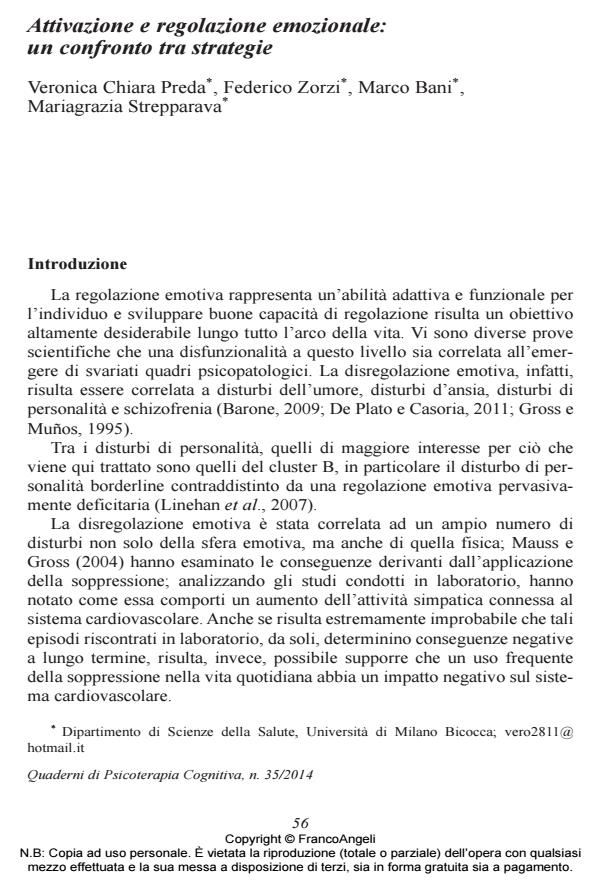Arousal and emotion regulation: a comparison among different strategies
Journal title QUADERNI DI PSICOTERAPIA COGNITIVA
Author/s Veronica Chiara Preda, Federico Zorzi, Marco Bani, Mariagrazia Strepparava
Publishing Year 2014 Issue 2014/35
Language Italian Pages 13 P. 56-78 File size 75 KB
DOI 10.3280/QPC2014-035004
DOI is like a bar code for intellectual property: to have more infomation
click here
Below, you can see the article first page
If you want to buy this article in PDF format, you can do it, following the instructions to buy download credits

FrancoAngeli is member of Publishers International Linking Association, Inc (PILA), a not-for-profit association which run the CrossRef service enabling links to and from online scholarly content.
This study investigated emotion regulation, with the specific aim of assessing the effectiveness of three different emotional strategies (reappraisal, distraction and suppression) in modifying the intensity of perceived emotions. To this end, 80 non-clinical subjects, 40 males and 40 females, aged 20-30 years (M = 24.51 years; SD = 2.714), were randomly assigned to four groups, one for each of the three strategies under study plus a control group. Participants were shown six clips eliciting anger, sadness, disgust, fear, tenderness or amusement, self-rating their level of emotional arousal on the PANAS scale for each clip. Distraction was found to be the most effective emotion regulation strategy; compared to the control group, subjects that used distraction obtained significantly different scores on the positive affect scale in relation to the clips eliciting anger and disgust, and on the negative affect scale in relation to the clip eliciting disgust. Reappraisal and suppression did not significantly alter emotional experience.
Keywords: Emotion regulation, distraction, suppression, reappraisal, films, arousal.
Veronica Chiara Preda, Federico Zorzi, Marco Bani, Mariagrazia Strepparava, Attivazione e regolazione emozionale: un confronto tra strategie in "QUADERNI DI PSICOTERAPIA COGNITIVA" 35/2014, pp 56-78, DOI: 10.3280/QPC2014-035004